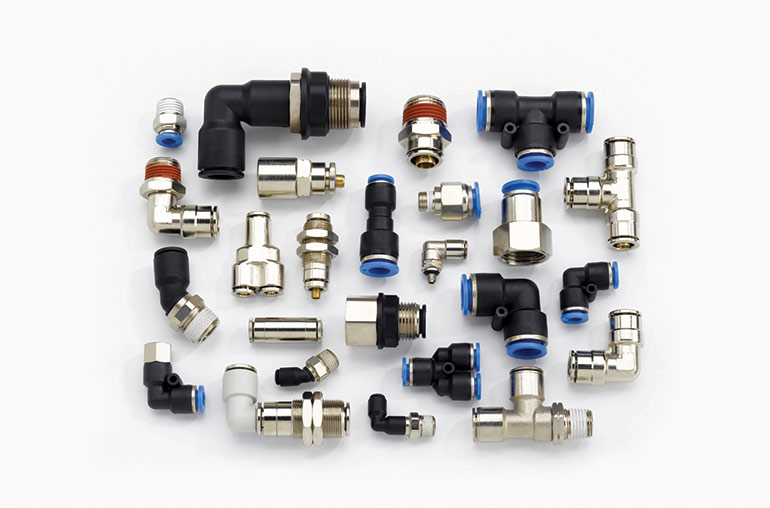Contributed by John Joyce • Global Marketing Director, Brennan Industries
Industrial automation requires a high level of performance while enhancing safety, saving time, boosting quality, and lowering costs. Pneumatics is used heavily in automation to provide gripping, clamping, pick-and-place, and more. As a result, reliable, efficient, and leak-free systems are imperative.

Pneumatic fittings must allow for the necessary flow without creating significant drops in pressure. Working pressure, temperature, environment, and maintenance should all be considered when choosing a quality pneumatic fitting for your system.
In fact, selecting the correct pneumatic fitting is especially crucial for applications utilizing industrial automation because of the need for precision and high output. It is important that machinery is working efficiently to allow for repetitive and precise tasks to be completed quickly. By having the correct fittings, you can not only meet the needs of an industrial automation application but also decrease energy consumption, save time on assembly, and eliminate leaks.
Pneumatic fittings come in different materials, depending on the style. Push-to-connect fittings are a popular method for connecting flexible pneumatic tubing with industrial robots and other machinery. They provide quick and simple connections.
Push-to-connect fittings allow for easy connections without having to glue, solder, or use clamps or compression-style unions. They are proven to provide highly reliable connections, even behind panels or other enclosed areas. Push-to-connect fittings help save on installation time and ensure reliable operation.
Downtime can paralyze the entire system. When machinery is down, productivity and profit are lost. And while downtime costs can vary depending on the size and nature of a facility, it can be prevented by installing the correct parts.
Two other common fitting types exist other than push-to-connect — barbed and compression fittings. But, because push-to-connect are much easier to use, they can provide many benefits to most applications.
Those benefits include the following:
Decreasing energy consumption — A great deal of energy loss is due to the leakage of compressed air. It is crucial to ensure there are no weak links where leakage can occur. And with push-to-connect fittings being so fast to install, they will pay dividends throughout the system’s life-cycle, as they require regular checks and maintenance.
Saving time on assembly — Whether a new installation or an emergency repair, saving time is saving money. The ability to make a fast and reliable connection is crucial for industrial automation, which is why push-to-connect fittings are ideal. They are easily detached or inserted in new tubing or when performing other maintenance.
Eliminating leaks — With push-to-connect fittings, a leak-free seal is achieved by quickly pushing the fitting into the tube or hose. Compression fittings often need to be retightened to stop leaks, which can cause distortion of the fitting threads or force the ferrule to cut into the tube, increasing the chance of leaks. Push-to-connect fittings, on the other hand, rarely require adjusting after installation.
Brennan Industries
brennaninc.com
Filed Under: Components Oil Coolers, Couplings & Fittings, Hose Assembly Tips